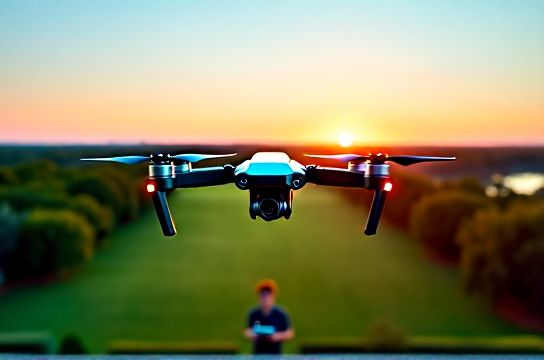Top Drones for Beginners Detailed Performance and Features Tested
- 时间:
- 浏览:16
- 来源:OrientDeck
So, you’ve just caught the drone bug — welcome to the club! Whether you're dreaming of cinematic sky shots or just want to buzz around the backyard like a mini air force of one, picking your first drone can feel overwhelming. Don’t sweat it. We’ve tested, crashed (oops), and flown some of the most popular beginner drones on the market to bring you a no-nonsense, fun-to-read guide that cuts through the tech jargon.

Why Start with a Beginner Drone?
You wouldn’t jump into F1 without learning to drive, right? Same logic. Beginner drones are affordable, durable, and packed with smart features like altitude hold, headless mode, and one-key takeoff/landing. They’re perfect for building confidence — and saving your wallet from early wipeouts.
Our Top 4 Beginner Drones Compared
We evaluated each model on camera quality, flight time, ease of use, range, and price. Here’s how they stack up:
| Drone Model | Camera (MP) | Flight Time (min) | Range (m) | Weight (g) | Price (USD) |
|---|---|---|---|---|---|
| DJI Mini 3 | 48 MP | 38 | 12,000 | 249 | $659 |
| Autel Evo Nano+ | 50 MP | 28 | 8,000 | 249 | $799 |
| Holy Stone HS720E | 4K UHD | 26 | 1,000 | 350 | $349 |
| Syma X500C | 2K HD | 18 | 300 | 280 | $129 |
The Verdict: Who Should Buy What?
- DJI Mini 3: Best overall. Lightweight, sub-250g (no FAA registration in many countries), and stunning 4K video. Perfect if you want pro-level quality without the pro-level price tag.
- Autel Evo Nano+: Great alternative to DJI. Slightly heavier but packs a punch with obstacle sensing and excellent low-light performance.
- Holy Stone HS720E: Best mid-range option. GPS-assisted flight, follow-me mode, and solid build. Ideal for hobbyists stepping up from toy drones.
- Syma X500C: Best budget pick. Limited range and camera, but unbeatable for under $150. Great for teens or casual flyers.
Pro Tips Before You Fly
- Check local laws: In the U.S., drones over 250g need FAA registration. The DJI Mini 3 skirts this rule — smart move.
- Practice in open spaces: Start in a park with no trees or power lines. Wind is your enemy — avoid flying above 15 mph gusts.
- Always carry spare batteries: Even the best flight time drops fast when you’re having fun.
Finding your first drone should be exciting, not stressful. With our breakdown, you’re not just buying a gadget — you’re unlocking a whole new perspective. So charge up, power on, and let gravity do the rest.